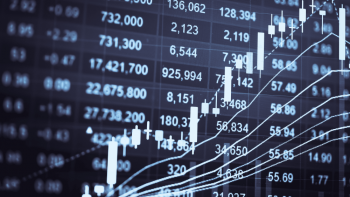German electricity prices on EPEX Spot 2023
- German electricity prices decrease significantly after 2022, with less impact from gas prices than in the previous year.
- More than 300 hours with negative prices on the day-ahead market, of which 260 hours fall under the “4-hour rule”.
- High price volatility, price spreads remain at high levels.
The German base price falls below the level of 2021
After the strong price increases in 2022, mainly triggered by a reduction and finally a complete suspension of Russian gas imports to Germany, prices in 2023 have decreased significantly. They even dropped below the level of 2021, when prices rose significantly in the Q4 due to already reduced gas supplies. However, they have not yet reached pre-2021 levels. The annual average base load (EPEX Base Price) fell to 71.7 €/MWh. The average prices for peak load (average price on weekdays from 8 am to 8 pm, Monday to Friday) fell to 86.2 €/MWh, off-peak load to 63.7 €/MWh (average price for all hours outside peak hours). Figure 1 shows the evolution of base, peak and off-peak electricity prices in the years 2017 to 2023. The peak/base ratio is 1.2 in 2023, showing no significant change compared to previous years.

The decline in electricity prices is partly due to reduced gas prices. Moreover, in 2023, around 56% of total electricity generation came from renewable sources, the highest ever recorded [2]. This is reflected in the reduced coupling of electricity and gas prices compared to the previous year (see 2022 electricity price analysis), in which electricity prices were strongly influenced by gas price movements. In 2023, both prices moved at significantly lower levels than in the previous year, but electricity prices showed higher volatility than the relatively constant gas prices, as shown in Figure 2. The daily base electricity price shows significant fluctuations. Especially towards the start and end of the year, some days approached 0 €/MWh. On 2 July 2023, the average daily price fell to -53.9 €/MWh, deep into the negative range.

In the characteristics of the hourly (day-ahead market) or quarter-hourly (continuous intraday trading) electricity prices in 2023, as shown in Figure 3, significant price spreads can be observed. The daily profile, as in the previous years 2019, 2020 and 2021, is characterised by high solar photovoltaic generation during the day. In 2022, extreme price fluctuations had overridden this effect. However, compared to 2022, last year saw a significant accumulation of negative prices, which will be discussed in more detail in the following section.

Remarkable increase of negative prices
The frequency of negative prices, totaling 301 hours on the day-ahead market, significantly exceeds the negative prices in 2019 and 2020, when spot market prices had already occasionally fallen below 0 €/MWh. The negative prices in 2023 can be divided into three phases:
- A strong accumulation of negative prices in the first days of the year and at the end of the year from around 22 December onwards, especially at night, with low negative prices averaging -2.54 €/MWh.
- In the months of March and April, as well as September and October, prices also fell partially into the negative range, with an average of -2.17 €/MWh, on days with an overall low-price level due to a high feed-in of renewable energies.
- In the summer months from late May to early August, significant to extreme negative prices occurred during midday hours, averaging -27.05 €/MWh. The lowest point of the year was reached on July 2, 2023, with -500 €/MWh for the hour from 2 pm to 3 pm. In this hour, according to data from entso-e, renewable energy sources fed-in 49.7 GWh, significantly surpassing the electricity consumption of 46.1 GWh. Additionally, conventional power plants generated 7.1 GWh, while 4.1 GWh of electricity was stored through the filling of pumped storage power plants [2], [7].
Overall, the number of negative prices last year was the highest ever on German spot markets, but many prices were around 0 €/MWh. The number of extremely negative prices was similar to 2019 and 2020, as shown in Table 1. A significant proportion of the 260 hours fell under the 4-hour rule. If there are at least four consecutive hours of negative prices, not only is no EEG compensation paid to the plants for this period, but they also have to bear the negative prices for their feed-in (see also our 2019 electricity price analysis for a more detailed explanation). In the EEG 2023, a gradual increase of this regulation has been decided. The minimum number of hours of negative prices for a suspension of the EEG compensation will be successively reduced, starting from the decision point until 2027, when market prices will be paid by default in the case of negative prices, even for EEG-compensated plants [8]. However, this regulation does not apply to privately operated installations, especially private photovoltaic installations, which experience a record number of installations in 2023 [9].
Despite the lower price levels, strong price peaks continue in 2023, with almost half of the spot market prices exceeding 100 €/MWh. This is significantly higher than the number of prices above 100 €/MWh in 2021 (see Table 1), where the overall price level was higher (see Figure 1).
Table 1: Analysis of the number of negative prices and very high prices on German spot markets from 2019 to 2023, based on EPEX SPOT data [1].
| Year | Day-ahead market | Intraday trading | Quarter-hourly continuous Intraday trading (average price) | |
| Amount of negative prices | 2023 | 301 | 1721 | 1729 |
| 2022 | 69 | 679 | 568 | |
| 2021 | 139 | 784 | 796 | |
| 2020 | 298 | 2041 | 1783 | |
| 2019 | 211 | 1095 | 1142 | |
| Amount of prices > 100 €/MWh | 2023 | 4106 | 16934 | 17014 |
| 2022 | 7368 | 29337 | 29104 | |
| 2021 | 2667 | 11211 | 11254 | |
| 2020 | 25 | 170 | 261 | |
| 2019 | 7 | 45 | 213 | |
| Amount of prices < -50 €/MWh | 2023 | 21 | 171 | 138 |
| 2022 | 15 | 38 | 7 | |
| 2021 | 10 | 106 | 94 | |
| 2020 | 27 | 204 | 261 | |
| 2019 | 21 | 76 | 158 |
Strong price spreads also in 2023
Despite the sharp overall decline in price levels, 2023 saw significant price spreads due to the high number of negative prices on the one hand and prices well into the three-digit range on the other, albeit smaller spreads than in the previous year 2022.
Table 2 shows the maximum hourly and daily price spread as well as the intra-hourly and intra-day standard deviation of electricity prices on the day-ahead and intraday markets for 2023 compared to previous years. The mean standard deviations are calculated using the annual mean value of the standard deviations of the electricity price per day or hour. Both the maximum price spread and the average standard deviations of electricity prices as a measure of volatility were lower in 2023 than in 2022, but significantly higher than in 2021. The increasing price volatility offers attractive revenue potential for storage and flexibilities, which could also benefit from high price spreads this year despite the lower price level.
Table 2: Analysis of the price spread and standard deviation of electricity prices on the German spot markets in the years 2019 to 2023 according to EPEX SPOT data [1]
| Year | Day-ahead market (hourly) |
Intraday trading (quarter-hourly) |
Quarter-hourly continuous intraday trading (average price) |
|||
| Daily | Daily | Hourly | Daily |
Hourly | ||
| Maximum price spread in €/MWh (averaged over the year) |
2023 | 97,9 | 176,2 | 45,1 | 213,3 | 42,2 |
| 2022 | 187,0 | 292,7 | 81,6 | 322,4 | 71,3 | |
| 2021 | 80,3 | 138,2 | 37,4 | 143,5 | 33,8 | |
| 2020 | 32,5 | 70,0 | 20,2 | 79,1 | 18,0 | |
| 2019 | 30,1 | 53,3 | 16,3 | 62,7 | 14,3 | |
| Standard deviation in €/MWh (averaged over the year) |
2023 | 28,8 | 35,9 | 19,8 | 39,8 | 18,6 |
| 2022 | 57,3 | 67,2 | 35,9 | 69,2 | 31,5 | |
| 2021 | 24,5 | 29,7 | 16,4 | 30,1 | 14,8 | |
| 2020 | 9,4 | 13,8 | 8,9 | 14,9 | 8,0 | |
| 2019 | 9,0 | 11,7 | 7,2 | 13,0 | 6,4 |
An analysis of the European day-ahead prices can be found here.
Sources
[1] EPEX SPOT. 2023. “Market data”, https://www.epexspot.com/en/market-data
[2] EEX European Energy Exchange. 2023. „Spot market data – THE“, https://www.eex.com/en/market-data/natural-gas/spot
[3] Organization of Petroleum Exporting Countries (OPEC). 2023. „OPEC Basket Price“, https://www.opec.org/opec_web/en/data_graphs/40.htm.
[4] ICE. 2023. „ Brent Crude Futures February 2023“, https://www.theice.com/products/219/Brent-Crude-Futures/data?marketId=5280993
[5] EEX European Energy Exchange. 2023. “EU CO2 Emission Allowances 2024”, https://www.eex.com/en/market-data/environmentals/futures
[6] Entso-E Transpareny Plattform. 2023. “Actual Generation per Production Type”, Data view (entsoe.eu)
[7] Entso-E Transpareny Plattform. 2023. “Total Load – Day Ahead / Actual”, Data View (entsoe.eu)
[8] Erneuerbare-Energien-Gesetz (EEG 2023). § 51 Verringerung des Zahlungsanspruchs bei negativen Preisen. Fassung vom 01.01.2023.
[9] Bundesregierung. 2023. „Solarpaket I – Mehr Solarstrom, weniger Bürokratie“, https://www.bundesregierung.de/breg-de/aktuelles/solarpaket-photovoltaik-balkonkraftwerke-2213726


